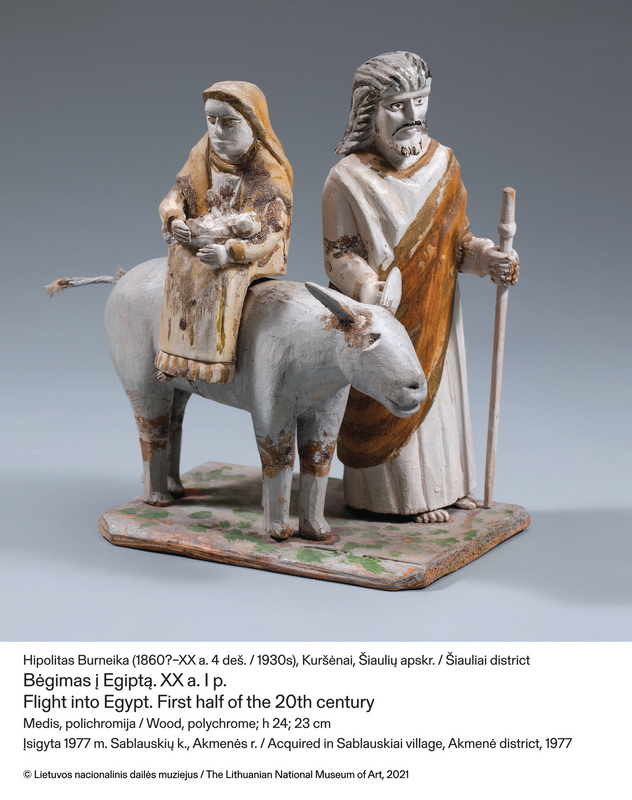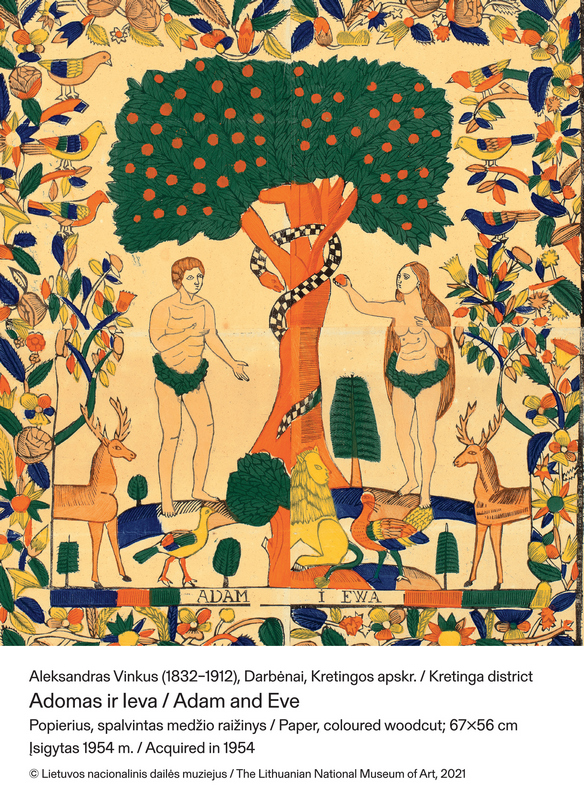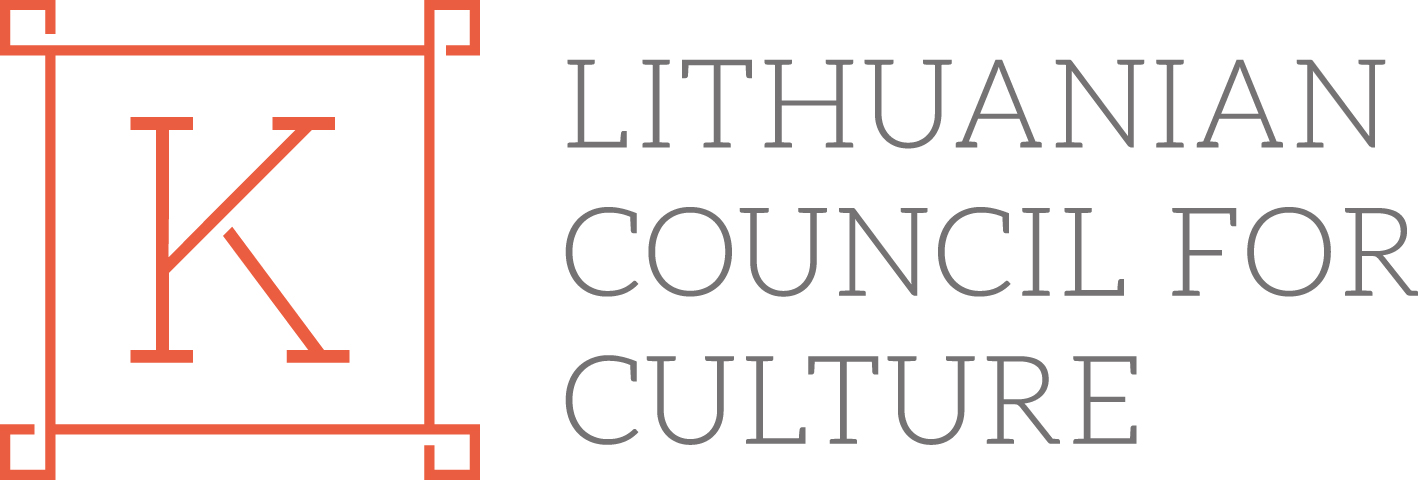The Earth Raised the Grass: Plants and Animals in Lithuanian Folk Art
Untill 12 May 2022
 The exhibition The Earth Raised the Grass: Plants and Animals in Lithuanian Folk Art at the Museum of Applied Arts and Design introduces to the surviving symbols of ancient Baltic culture and Christian culture through folk art artefacts.
The exhibition The Earth Raised the Grass: Plants and Animals in Lithuanian Folk Art at the Museum of Applied Arts and Design introduces to the surviving symbols of ancient Baltic culture and Christian culture through folk art artefacts.
Works from past generations that ultimately found their place in museums are testimony of how ordinary people from the villages understood beauty, how they sensed harmony, outbursts of creativity, the fostering of traditions, their continuity and change. It was always a long-held idea to show the essence and meaning of folk art, and the multifaceted ways this can be depicted. The rich collections of folk art housed at the Lithuanian National Museum of Art are rarely disclosed to the public, thus now is an excellent opportunity to see at least part of these treasures. The concept of this exhibition is based on the ancient Baltic faith, its evolution, merging and comparison with the meanings lying within Christian culture.
 The symbolic axis in the archaic world model is the Tree of Life, or the Tree of the World. In the Baltic world view, according to Norbertas Vėlius and other researchers of ancient culture and mythology, the Tree of Life was also one of the key images. Carrying multiple meanings, in this mythical image the roots of the tree symbolise the underworld, the trunk – the earth, and the crown of foliage – the heavens. At the same time, it symbolises the eternal circle of life – in winter it goes into a state of dormancy, but remains alive, ready to bloom forth with new buds of life in the spring.
The symbolic axis in the archaic world model is the Tree of Life, or the Tree of the World. In the Baltic world view, according to Norbertas Vėlius and other researchers of ancient culture and mythology, the Tree of Life was also one of the key images. Carrying multiple meanings, in this mythical image the roots of the tree symbolise the underworld, the trunk – the earth, and the crown of foliage – the heavens. At the same time, it symbolises the eternal circle of life – in winter it goes into a state of dormancy, but remains alive, ready to bloom forth with new buds of life in the spring.
Reflections of the ancient world view have mostly come to us via expressions of ethnic culture. A large part of the language of symbols transferred as innate information over the course of time has been forgotten – symbols were transfigured or changed, becoming decorative ornaments. Their meanings these days can be understood, deciphered and read thanks to a complete ethnocultural context – customs, folklore, mythology, comparisons with the art of other nations and their world view. As cultural epochs changed and Christianity was entrenched, the meaning of various symbols changed accordingly. Plants, animals and birds carry a special, symbolic meaning in Christian iconography and in visual traditional folk art. The primitive visual expression of folk art painters and sculptors conveying images of the saints and specific narratives revealed the world created by God to the ordinary, illiterate believers in a more understandable way.
The exhibition will be open until 12 May.
Exhibition curators: Dalia Bernotaitė-Beliauskienė, Daiva Beliūnienė, Marija Kuodienė, Žydrė Petrauskaitė
Exhibition architect Saulius Valius
Graphic designer Jurga Juodytė
The project is funded by

3A Arsenalo st, Vilnius, Lithuania
+370 5 212 1813;
+370 5 261 25 48; +370 5 262 80 80.
tddm@lndm.lt













